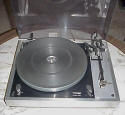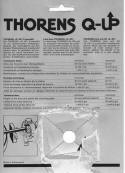-edible zone-
TD160 History:
1972 - The TD160 replaces the TD150 as
the affordable but still Hi-Fi player featuring a similar 3 point
suspension floating sub-chassis but with the new TP16 tonearm .
Operation is pure manual but with an integrated cable operated tonearm
cue. Like the TD150, the TD160 used a synchronous 16 pole 2-phase AC
motor that derived it's pitch precision by locking on to the mains
frequency the same as an electric clock motor from that era. Both TD125
MkII and TD160 share the same 7 pound die cast zinc platters and the
same 10mm platter bearing.
At the same time a less expensive
TD165 was offered with the TP11 tonearm. This new tonearm used the same
gimbal pivot bearing, arm tube and head shell as the TP16 but
substituted a weight-on-string style of anti-skate control and also
featured a different counterweight. The TD165 used a 7mm diameter
platter bearing fixed to a resin inner platter. The motor and pulley
were also different from the TD160.
1975 - The TD145 is offered.
In essence a TD160 with automated arm lift and motor stop at end of play
1976 - Introduction of the "Isotrack"-tonearm with a low effective
mass. This is an updated version of the TP16 tonearm featuring
remove-able 'arm wands' fixed by a collar lock very close to the pivot
bearing. Moving the coupling joint closer to the pivot reduced effective
mass substantially. The replaceable arm-wand of this tonearm is called
the TP62. A later version of the isotrack tonearm, called the TP16-III
used another style of arm-wand designated the TP63. Both of these
tonearms rated their effective mass at 7.5 grams. These tonearms were
suitable for use with phono cartridges having high compliance
suspensions.
Optional with the Isotrack tonearms were arm-wands
featuring integrated phono cartridges. The TPO63 and TPO70 were two such
arm-wands. In cooperation with EMT, Thorens produced special cartridges
of the moving-coil variety. Integrated arm-wand-cartridges TMC63/TMC70,
phono cartridges MCHI and MCHII as well as the PPA990 and STA960
(pre-preamplifier and step-up transformer)
Introduction of the
TD160 Mk II with TP16 Mk II (Isotrack)
Introduction of the TD166
with TP16 Mk II (Isotrack)
Introduction of the TD145 Mk II with
TP16 Mk II (Isotrack)
1982 - Introduction of the upgraded TD166
Mk II
Introduction of the TD147
Introduction of the TD
160 Super
The TD160 Super was in essence a standard TD160 mkII
but with the following features:
a larger more solid cabinet
damping material applied to the underside of the motor plate and
sub-chassis pan
heavier cabinet bottom plate
typically delivered
with base but no tone arm. But sometimes supplied with TP16 MkIII (Isotrack)
Dustcover has more substantial steel hinges
1983 -
Introduction of the TD146, an semi-auto variant to the TD166
Introduction of the TD147 Jubilee (a centennial anniversary edition)
-- end history --
__________________________________________________________________horizontal rule
--------------Articles
-- Finding a proper replacement belt some notes and guidelines
* TD160 (mk1) top motor plate dimensions (in mm)
TD160 (mk1) top motor plate dimensions (in mm)
-- (hint: click thumbnail for full size image)
* TD160 (mk1) Motor azimuth adjustment
TD160 (mk1) Motor azimuth adjustment
* You knew about the auxiliary counterweight on the TP16 mk1, right?
It's a mass adjuster.
You knew about the auxiliary counterweight on the TP16 mk1, right?
It's a mass adjuster.
-------------TD16x manuals in pdf.
- TD160 Manual in Eng/Ger/Fr
- TD165 Manual, Eng/Ger/Fr
- TD166 Manual, Eng/Ger/Fr
- TD166 Service Manual in English
- Supplementary Sheet, TP62
Setting Up My First TD16x / TD14x
* TD160 clutch pulley disassembly
TD160 clutch pulley disassembly
*
 The TP16 tonearm disassembled, repaired and then
reassembled and then tested.
The TP16 tonearm disassembled, repaired and then
reassembled and then tested.
-- Suspension Tuning by Tim Bailey
-- More Susp. tuning notes by Steve Clarke
-- The Chadwick Mods by Steve Clarke
-------------------------Reviews
* An Aluminum Clutch Pulley for the
Thorens TD16x-14x By AudioSilente
An Aluminum Clutch Pulley for the
Thorens TD16x-14x By AudioSilente
________________________________________________horizontal rule
Thorens Links:
http://edimba.tripod.com/PDF/PDF.html online user manuals for
a variety of Thorens tables in PDF and HTML.
http://www.stefanopasini.it/Audio_index_Thorens.htm a great
site with a picture history of Thorens tables.
http://www.stefanopasini.it/images/Thor1215.pdf an
informative Thorens history article by Stefano Pasini. (highly
recommended)
http://www.audioinvest.no/ some useful specs and history
in general on Thorens and other turntables
*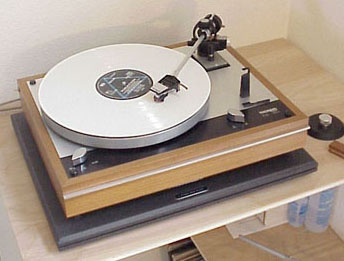 TD-160 MK I in detail with interior photos
TD-160 MK I in detail with interior photos
*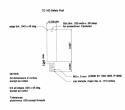 Safety Post dimensions. (click thumbnail)
Safety Post dimensions. (click thumbnail)
_____________________________________________________horizontal rule
* TP16 MK1 Tonearm disassembled, repaired,
reassembled
TP16 MK1 Tonearm disassembled, repaired,
reassembled
*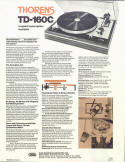 TD-160 MK I info sheet. Thanks to Ed Alderson for this scan. Ed bought
his TD-160 new back in 1975 and was offered this propaganda sheet prior
to making his purchase. Notice the close-up picture of the motor pulley
indicates the absence of any safety post. File size 129K .
TD-160 MK I info sheet. Thanks to Ed Alderson for this scan. Ed bought
his TD-160 new back in 1975 and was offered this propaganda sheet prior
to making his purchase. Notice the close-up picture of the motor pulley
indicates the absence of any safety post. File size 129K .
*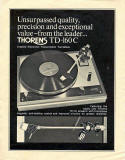
 TD-160 MK I info sheets. File sizes, 142K and 165K. These scans from an
anonymous contributor. Thanks...!
TD-160 MK I info sheets. File sizes, 142K and 165K. These scans from an
anonymous contributor. Thanks...!
Thorens review articles from the British Audio magazine "Hi-Fi Answers"
- Charles Trayhorn speaks out on the TD160S....!
- Comparison test: Ariston RD80, Heybrook TT2, Thorens TD160Super
- Tuning tips for the TD160.
- Hi-Fi Answers Circa 1980 to 1982. I recommend reading them on screen at 100 % size as they don't print readable for me.
Magazine article scans in JPEG provided by Jack Leong. (Thanks, Jack.....!)
__________________________________________________________________horizontal rule
Hi-Fi Choice reviews of three Thorens turntables circa 1989 provided by Gordon Dyer. Thanks for the excellent scans Gordon!
*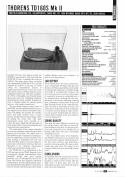 Review: TD160S Mk II Hi-Fi Choice 1989
Review: TD160S Mk II Hi-Fi Choice 1989
*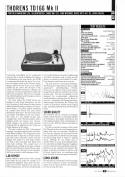 Review: TD166 Mk II, Hi-Fi Choice 1989
Review: TD166 Mk II, Hi-Fi Choice 1989
* Review: TD320 Mk II, Hi-Fi Choice 1989
Review: TD320 Mk II, Hi-Fi Choice 1989
______________________________________________________horizontal rule
*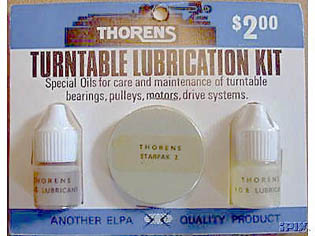 Thanks to 2channelman for this picture
Thanks to 2channelman for this picture
*
_________________________________________________________horizontal rule
About The THORENS synchronous drive motors.
The TD-160 is
driven by a 16 pole two-phase synchronous motor. This motor has two
identical stators which work on the rotor at an angle of precisely 90°
to one another.
The speed of rotation is determined by the power
frequency and by the number of poles used and, therefore, this will
always remain constant regardless of aging, dirt or climatic conditions.
Motor rpm at 50 hz mains frequency: 375 (50 hz / 8 x 60 = 375)
@33-1/3rd platter rpm
Motor rpm at 60 hz mains frequency: 450 (60
hz / 8 x 60 = 450) @33-1/3rd platter rpm
A different diameter
pulley is used in either case to arrive at the correct 33-1/3 and 45
platter rpm.
Other uses of the AC synchronous motor: electric
clock before the quartz oscillator came into popular use for time
keeping. Prior to the quartz oscillator, good quality electric wall
clocks were often regarded as being much more accurate than a mechanical
clock or watch of the same era.


